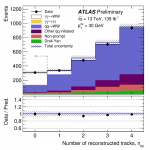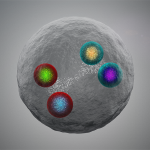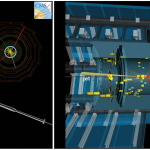W bosons, elementary particles that carry the weak force, one of the four fundamental forces. have been observed in pairs from photon collisions in the ATLAS experiment of the LHC.
It confirms one of the main predictions of electroweak theory, that force carriers can interact with themselves, and, since the LHC has been used a high-energy photon collider directly probing electroweak interactions, provides new ways to probe it.
According to the laws of classical electrodynamics, two intersecting light beams would not deflect, absorb or disrupt one another. However, effects of quantum…
Physics
The complex ways in which quarks bind themselves into composite particles such as the protons and neutrons found inside atomic nuclei are not yet understood so the discovery of a four-quark particle, the first of a previously undiscovered class of particles, could provide valuable insight into physics at the very small level.
Quarks typically combine together in groups of twos and threes to form particles called hadrons. Physicists had only observed tetraquarks with two heavy quarks at most and none with more than two quarks of the same type but had predicted the existence of four-quark and…
At the LHCP conference this year, the ATLAS and CMS collaborations presented new results relating to a physics process called vector boson scattering plus the first observation of the so-called “massive triboson production."
During proton collisions at the LHC, many particles, including the carriers of the electroweak force – photons and W and Z bosons – are produced. These bosons are often referred to simply as vector bosons, in the Standard Model, and one of the processes that leads to their pair production is called vector boson scattering. In a vector boson scattering process, a vector…
Dark matter is abundant in the universe, and even though we can't detect it is by far the most common form of matter, making up about 85 percent of the universe's total. It hides in plain sight so we don't know what it's made of but we can infer it by its gravitational pull on known matter.
Theorized weakly interacting massive particles, or WIMPs, have been among the ideas for what comprises dark matter, but they haven't shown up where scientists had expected them. It may be time to look beyond popular notions with a lot of funding, such as big projects like Europe's CERN, and use lots of…



